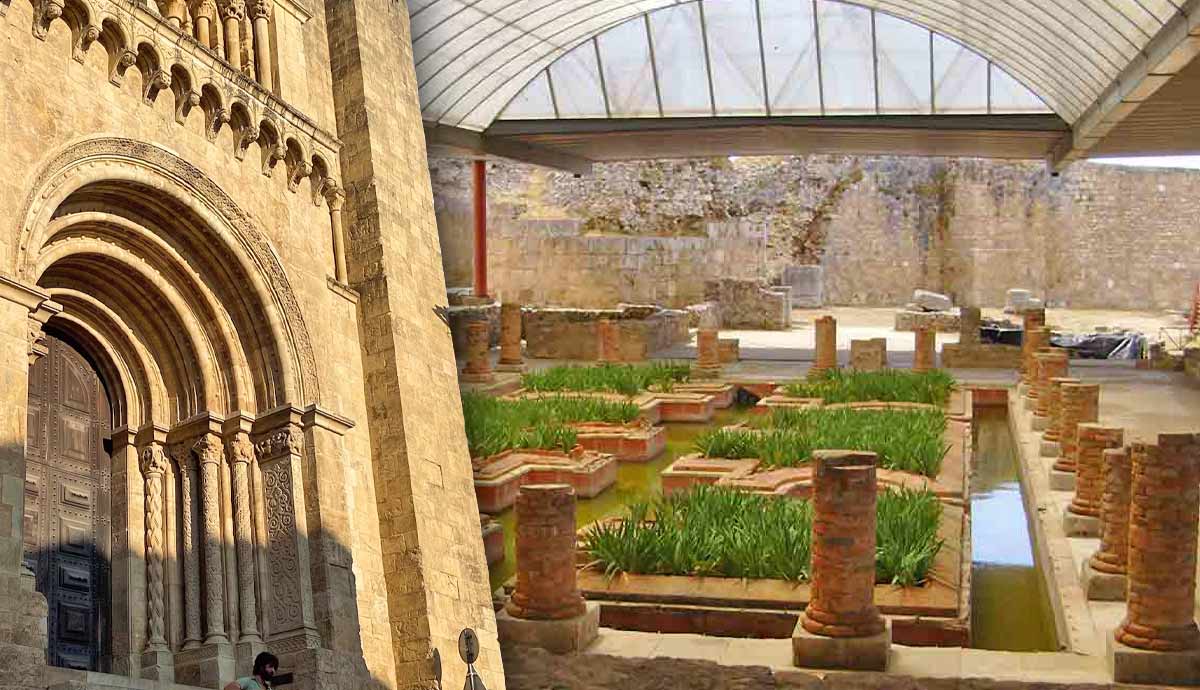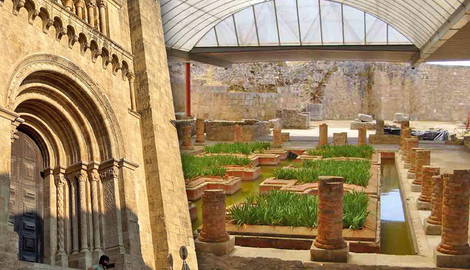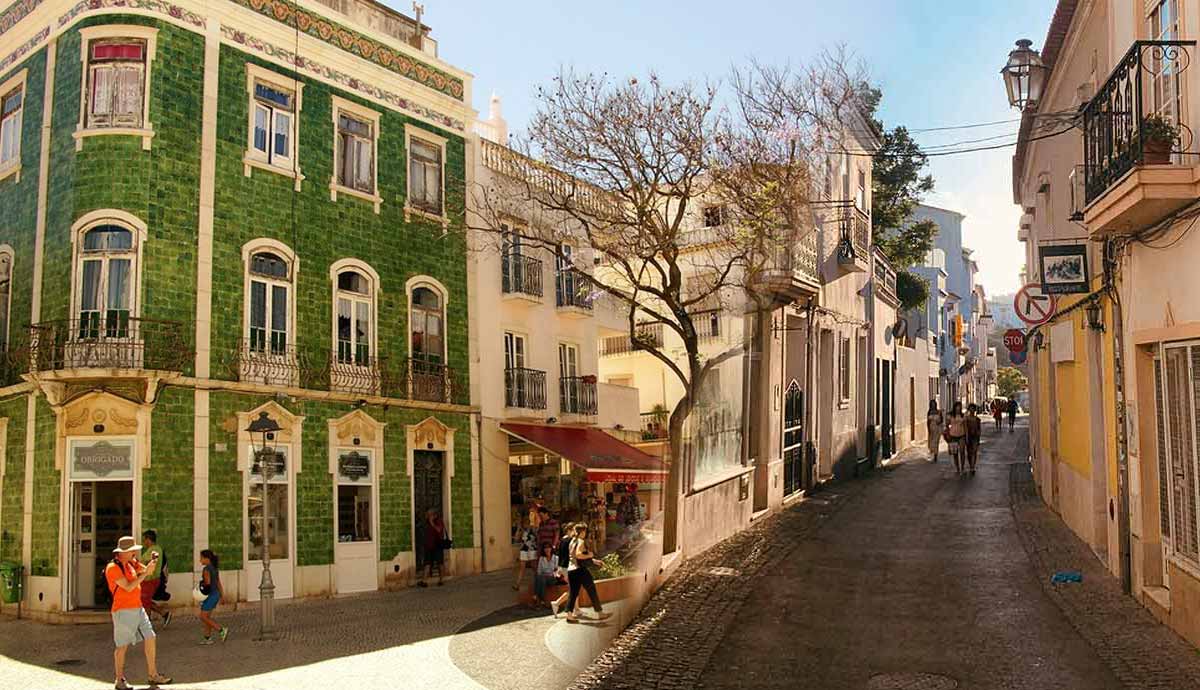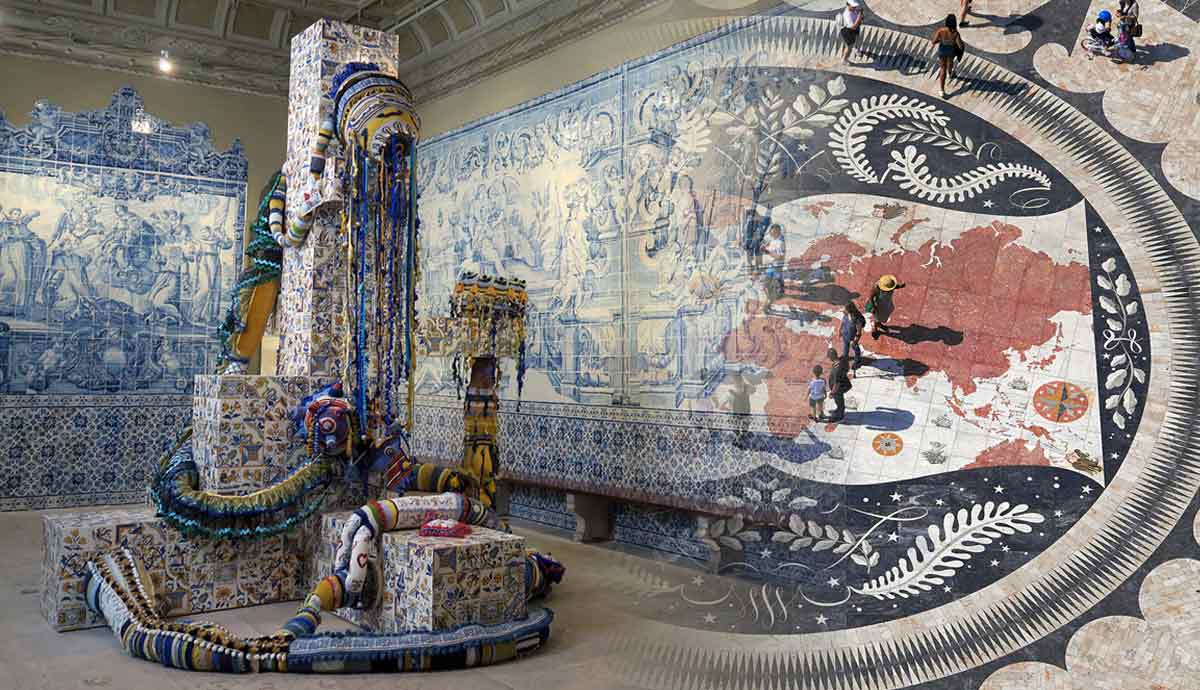
Coimbra is one of the oldest cities in Portugal, with a deep connection to the country’s history. The city met the first Moors arriving in the Iberian Peninsula and became the birthplace of six Portuguese kings from the First Dynasty.
Today, Coimbra is a vibrant city with a remarkable past most people do not know about. Walk along the riverside or wander the narrow cobbled streets in the old town. You will be baffled by the city’s incredible monuments and its architecture.
What to Visit in Coimbra?
There are many reasons to visit Coimbra and many more to stay indefinitely!
1. Almedina Tower and Arch

This is the entrance to Old Town Coimbra. The Almedina Tower and Arch foundations date back to the Moorish occupation and were once part of the city walls. Historians believe Sesnando Davides was responsible for building the Torre and Arco de Almedina after conquering Coimbra in 1064. Over the centuries, both these structures were rebuilt and refurbished several times.
Also known as Arco da Barbacã, it had different functions over the centuries. In the 14th and 15th centuries, the arch served as the Town Hall and later the “House of Audience,” where the city council met. At the top, the sliding bell announced the council sessions and the opening and closing of the doors to the public. Here, there was also the Chapel of Our Lady of Conception, where a mass took place before the meetings.
In 1835, the Town Hall moved to a new location, and the tower became home to the Worker’s Instruction Society in 1851, the Conimbricense Philharmonic, and the Free School of Arts and Design in 1878. The Almedina’s current appearance dates back to 1954 when it was converted into an Ethnographic Museum. Today, it works as the Municipal Historical Archive.
2. Sé Velha Cathedral

Sé Velha, or the Old Cathedral, is one of the oldest buildings in Coimbra. It is also the only Portuguese cathedral from the Reconquista that remains unchanged today. Although the exact construction date is unclear, historians believe it dates back to 1117, as a church consecration stone states.
During the reign of King Afonso Henriques, the cathedral was refurbished many times. In fact, when D. Sancho I was crowned the second King of Portugal in 1185, the Cathedral was far from complete. Construction ended only in the 13th century.
The project is attributed to Master Roberto, a Frenchman responsible for building Lisbon Cathedral. Master Bernardo was in charge of the construction work and was later replaced by Master Soeiro, the architect responsible for other churches in the Diocese of Porto.
The Cathedral has three naves, a slightly protruding transept, a lantern tower, and a tripartite transept. This construction breaks with the traditional Romanesque cathedrals found in Braga and Porto and set the tone for a new type of building in Coimbra, Lisbon, and Évora.
The cloister construction began in 1218, during King Afonso III’s reign. It was one of the first Gothic buildings in Portugal. Builders had to dig into the hillside to fit in the larger-than-usual cloister. Shaped as a quadrangle, it has a vaulted floor and arcades built with double-pointed arches set on slender twinned columns with an upper oculus.
Inside the Sé Velha, you will find the Chapel of the Blessed Sacrament and the Chapel of St. Peter. In the chancel, the Flemish artists Olivier de Gand and Jean d’Ypres designed the gilded altarpiece in Gothic style. The capitals are decorated with plant and animal themes. The absence of human figures and biblical scenes is likely because they were the work of Mozarabic artists who had settled in Coimbra.
3. Monastery Santa Cruz and Sacred Art Museum

The Mosteiro de Santa Cruz was founded in 1131 by the Canon Regular of St. Augustine, with the support of King D. Afonso Henriques, Portugal’s first king, and his successor King D. Sancho I, both buried here.
At this monastery, King D. Afonso Henriques came to attend mass every time he returned from battling the Moors during the Reconquista. It was also the home of the first medieval scholars in Portugal, where Saint Anthony, Doctor of the Church, studied Theology and deepened his knowledge of the sacred scriptures.
The church, cloister, and chapels were rebuilt during the 16th century. The building’s façade, the pulpit, and the king’s tombs are only a few examples of the exquisite designs of Diogo de Boitaca.
You can visit the inside of the monastery and admire its incredible architecture. Here, you will also find the Museum of Sacred Art, which presents the relics of St. Teotónio, the first Portuguese saint, the Cloister of Silence, and the Upper Choir. Since the two first Portuguese kings are buried here, in 2003, the Mosteiro de Santa Cruz was declared a National Pantheon.
4. The Ruins of Monastery Santa Clara-a-Velha

In 1283, Lady Mor Dias, a noblewoman from Coimbra, founded a humble monastery with a small church, cloister, and dormitory. However, the Canons Regular of St. Augustine halted the construction since they did not approve the foundation of a new monastery under the Order of St. Clare.
It was only in 1314 that the Holy Queen Isabel of Aragon replaced the Poor Clare nun’s small convent. The building was designed by Domingo Domingues, an architect who previously worked at the Alcobaça Monastery. In the 14th century, the building stood out due to its unusual size and the stone vaulting covering three naves simultaneously.
Unfortunately, the monastery was often flooded due to the cyclical rise of the Mondego River waters. As a result, an upper floor was added to the original design. In the 17th century, King João IV ordered the construction of a new convent named Santa Clara-a-Nova. The new building was located on a hill, away from the Mondego River riverbanks.
Since the nuns moved into the new convent, the Santa Clara-a-Velha was abandoned and became a ruin. It was restored in the late 20th century. Today, you can visit this iconic landmark and admire the artifacts recovered during the restoration works.
5. Monastery of Santa Clara-a-Nova

Life at the Mosteiro de Santa Clara-a-Velha had become so unbearable due to the constant flooding that King João IV ordered the construction of a new monastery in a higher location. The building was completed in 1696, and the Poor Clare nuns moved in. Its patron was the Queen Saint Isabel of Aragon, who is buried here.
This monastery presents an irregular quadrangular plan, built with Mannerist architectural features. Two rows of contiguous cells border the long-vaulted corridors with its high ceilings. There is a front yard with stunning views over Coimbra and the Mondego River.
A baroque altarpiece was prepared to house the 17th-century silver and crystal urn for the veneration of the patron saint of Coimbra. On a pedestal in front of the urn is the image of Queen Santa Isabel of Aragon carved in a unique piece of mahogany. In the refectory, you will find traditional Portuguese blue and white tiles covering the walls, as well as benches and a pulpit.
6. The University of Coimbra

The University of Coimbra is the oldest in Portugal and one of the oldest in Europe. It was originally founded in Lisbon by King D. Dinis in 1290. In August of the same year, a bull issued by Pope Nicholas IV recognized the university’s general studies, which included the faculties of Arts, Canon Law, Civil Law, and Medicine.
Although it was originally located in Largo do Carmo in Lisbon, the university’s location changed many times in the 14th century. The university was definitively transferred to Coimbra’s Royal Palace of Alcáçovas in 1537.
The university sits at the city’s highest point while overlooking the Mondego River. It is a complex construction built around a central courtyard where you will find some of the university’s landmarks.
You may enter through Ponte Férrea, a Mannerist work from 1634, where you will see the images of the patron kings D. Dinis and D. João III. To your right, and at the center, is the Via Latina, a Mannerist colonnade from the 18th century. Its purpose is to remind academics of an ancient rule where Latin should be the only spoken language within the university gates.

While entering the arcade, you will see the famous Sala Grande dos Actos and the iconic tower. The four tower bells would mark the university’s (and the city’s) routine. To the west, is the Private Examinations Hall, the Museum of Sacred Art, and the astounding Joanina Library.
In 2013, the University of Coimbra became a UNESCO World Heritage Site. This was firstly because the university was once the center of knowledge and culture for four continents (as a part of the former Portuguese Empire). Secondly, the university has been transformed through several periods of Portuguese architecture, art, and culture that are deeply related to ideological reforms in the country. Finally, the university played a unique role in unifying the Portuguese language.
Today, the University of Coimbra ranks among the world’s leading universities in the Times Higher Education ranking, where more than 25,000 students pursue their goals.
7. Sé Nova Cathedral

Built in 1542, by Companhia de Jesus, this was the first Jesuit College in Portugal and the largest in Coimbra. Its goal was to prepare the missionaries and send them to the newly founded territories overseas.
The Jesuits occupied Sé Nova until 1759, the year when Marquês de Pombal expelled the Jesuits from Portugal. As a result, in 1772, the episcopal seat was transferred from the Church of Santa Maria (the Old Cathedral, in Romanesque style) to this much more spacious building.
The Sé Nova façade presents the Jesuit architectural canons, showing an austere appearance. Inside, with a single nave, the transept and chancel are decorated with magnificent gilded altarpieces, built between the 17th and 18th centuries. In the side chapels, there are several Baroque altars dedicated to Our Lady of the Snows, St. Thomas of Villanova, and the Blessed Sacrament on the right, and St. Anthony, the Resurrection, and St. Ignatius on the left.
8. Conímbriga

The Roman ruins of Conímbriga are one of the most visited landmarks in Portugal, welcoming more than 100,000 people every year. Although Conímbriga is 16 kilometers (10 miles) from Coimbra city center, you cannot tour one without seeing the other.
Conímbriga’s origins can be traced back to the Conii, a Celtic tribe from the Iron Age. It was later occupied by the Romans, who Romanized its entire population. In the 2nd century, Emperor Augustus built the public baths and Forum here.
At the end of the 4th century, when the Roman Empire declined, the Romans built a massive defensive wall to repel the Suevi in 468. Their efforts were unsuccessful, and the city was captured. Over time, Conímbriga became a shadow of its glory days as people moved to neighboring villages.
During the 20th century, several excavations revealed a marvelous and complex set of buildings, which included thermal baths, an aqueduct that runs more than 3,400 meters (2.1 miles) from its source, and the remains of a Christian Basilica likely dated from the 6th century.
At Conímbriga, you can travel back in time and see what Roman daily life was like. Check out the polychrome mosaic floors from noble houses here and explore the Casa dos Repuxos (the House of the Fountains), a magnificent and beautifully designed garden decorated with scenes from Roman mythology.










